- News
- Reviews
- Bikes
- Accessories
- Accessories - misc
- Computer mounts
- Bags
- Bar ends
- Bike bags & cases
- Bottle cages
- Bottles
- Cameras
- Car racks
- Child seats
- Computers
- Glasses
- GPS units
- Helmets
- Lights - front
- Lights - rear
- Lights - sets
- Locks
- Mirrors
- Mudguards
- Racks
- Pumps & CO2 inflators
- Puncture kits
- Reflectives
- Smart watches
- Stands and racks
- Trailers
- Clothing
- Components
- Bar tape & grips
- Bottom brackets
- Brake & gear cables
- Brake & STI levers
- Brake pads & spares
- Brakes
- Cassettes & freewheels
- Chains
- Chainsets & chainrings
- Derailleurs - front
- Derailleurs - rear
- Forks
- Gear levers & shifters
- Groupsets
- Handlebars & extensions
- Headsets
- Hubs
- Inner tubes
- Pedals
- Quick releases & skewers
- Saddles
- Seatposts
- Stems
- Wheels
- Tyres
- Health, fitness and nutrition
- Tools and workshop
- Miscellaneous
- Buyers Guides
- Features
- Forum
- Recommends
- Podcast
TECH NEWS
Tour de France Tech 2014: Rui Costa’s Merida Reacto KOM
World Champion Rui Costa has a new bike in the shape of the Merida Reacto KOM, and here’s your chance to have a good look at it.
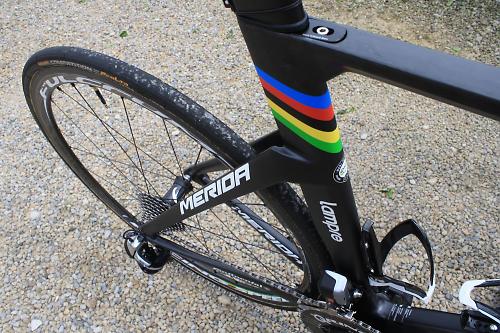
We’re in Yorkshire ahead of the Grand Départ, reporting live from the road.cc bunker in Harrogate, and spotted the Reacto KOM at Team Lampre-Merida’s hotel – KOM standing for King of the Mountains, obviously.

The Reacto is Merida’s aero road bike and we rode the Reacto Evo at its launch in Majorca earlier in the year. Rui Costa isn’t on the Reacto Evo, though, he’s on the Reacto KOM, which is a new model.
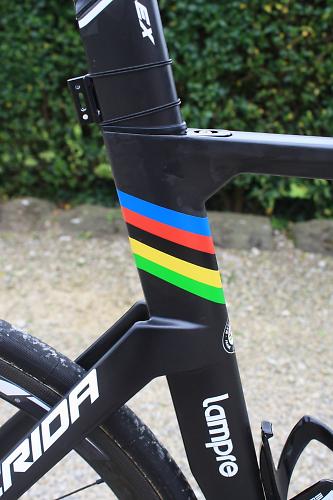
Team Lampre-Merida switched from the Scultura SL to the Reacto Evo as their default race bike this year because they reckon that an aero road bike is faster than a lightweight one in nearly all races. But in an ideal world you’d ride a bike that was both aero and lightweight, and that’s where the Reacto KOM comes in.
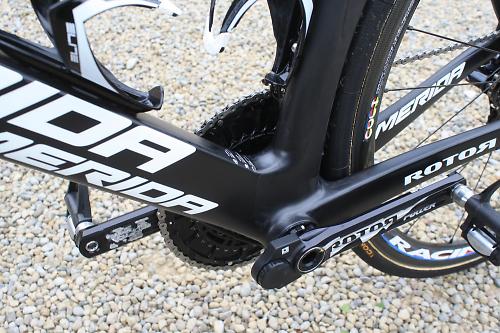
Merida say that once the Rotor power meter, computer, bottle cages and pedals are added, the Reacto Evo weighs 7.25kg, whereas the UCI’s minimum weight limit for racing is 6.8kg. That means they had some scope to do some pruning, and they reckon they’ve managed to get Costa’s bike down to exactly 6.8kg.

“Knocking almost half a kilogram off the team bike was not an easy task - but after all we are competing in cycling's Formula One,” said Jürgen Falke, head of Merida's R&D department.
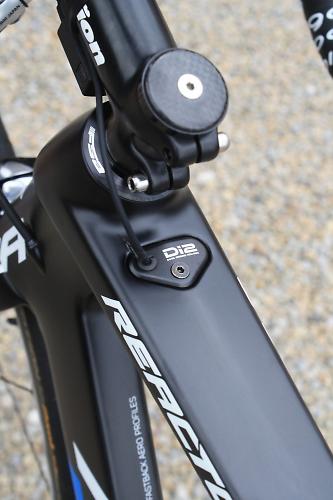
Merida changed the fibre layout of both the frame and the fork and opted for as little paint as possible to reduce the weight by 80g. There are only two frames of this type in existence. Merida saved another 50g by making a one-piece aero seatpost with an integrated Di2 battery.

Vision’s brand new Trimax Carbon handlebar and Metron stem also help to lower the weight, as do the FSA headset and ultralight carbon bottle cages from Elite.

The Fulcrum wheels combine 35mm deep carbon rims with hubs fully made of carbon.
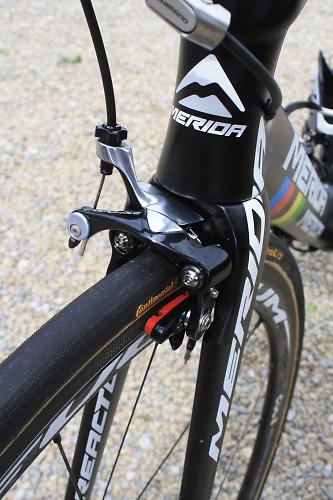
The bike is fitted with a Shimano Dura-Ace Di2 groupset including direct mount brakes.

The rear brake calliper is mounted behind the bottom bracket.

Team Lampre-Merida haven't skimped on making the most of the world champion stripes using it from everything from the frame to the saddle rails.
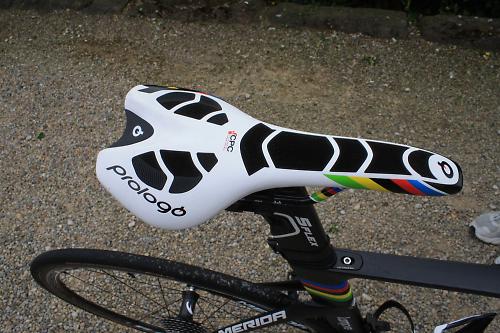
The notch out of the S Flex seatpost, by the way, is designed to add a degree of give and add comfort to the ride.

Mat has been in cycling media since 1996, on titles including BikeRadar, Total Bike, Total Mountain Bike, What Mountain Bike and Mountain Biking UK, and he has been editor of 220 Triathlon and Cycling Plus. Mat has been road.cc technical editor for over a decade, testing bikes, fettling the latest kit, and trying out the most up-to-the-minute clothing. He has won his category in Ironman UK 70.3 and finished on the podium in both marathons he has run. Mat is a Cambridge graduate who did a post-grad in magazine journalism, and he is a winner of the Cycling Media Award for Specialist Online Writer. Now over 50, he's riding road and gravel bikes most days for fun and fitness rather than training for competitions.
Latest Comments
- Rendel Harris 3 sec ago
What this research is lacking is any evidence as to how often cyclists hit any sort of bollard - I've never seen it happen. Unless it's actually a...
- Daclu Trelub 6 hours 57 min ago
A bit like underarm, surely?
- hand0j1n 8 hours 12 min ago
Hopefully the new device is a big success, but wahoo do have a lot work to do in terms of convincing that their quality control has improved. ...
- chrisonabike 7 hours 2 min ago
Agree that the moaning comes from a place of priveledge and ultimately "if only there weren't so many other people driving"....
- Simon E 8 hours 47 min ago
Have added some clarification....
- Simon E 8 hours 56 min ago
I was tempted to try Galibier gloves but opted for Endura Freezing Point from LBS last year. Not cheap (£60, I think). I'd prefer a shorter cuff...
- Simon E 9 hours 34 min ago
I can't wait that long! Here's a series that any good vlogger / 'grammer would surely recognise....
- Simon E 9 hours 43 min ago
At 2.30pm on Saturday a small hatchback car "came to rest on its side in a precarious position" near the hamlet of Ratlinghope on the west side of...
- IanMK 10 hours 20 min ago
I do wonder if Highway Planners and Councils understand all the implications of putting in traffic calming measures. They certainly take no...
- Oldfatgit 10 hours 39 min ago
How long before some waste of DNA complains about them on the footpath ... or for Grimsby [and the other shit-tips] to ban them ...























Add new comment
6 comments
That looks uncomfortable, fast, but uncomfortable.
How do custom bikes like this square with the rules about riding stuff that can be bought?
Very nice looking aero bikes are always lookers
Never seen a rear brake mounted there before... Is that a new thing?
A pretty old thing, actually. To quote Sheldon on the matter:
However, they weren't great for the everyday rider - marginal aero benefits if you're not a pro, easy to get clogged with mud or bashed on things, and harder to service and change a wheel when the need arose.
Ooh. Taste!
I'd like one just like that please (although I'll change the saddle for one that suits me).